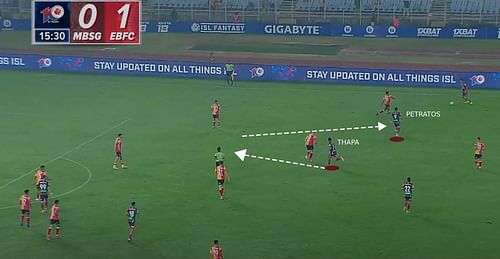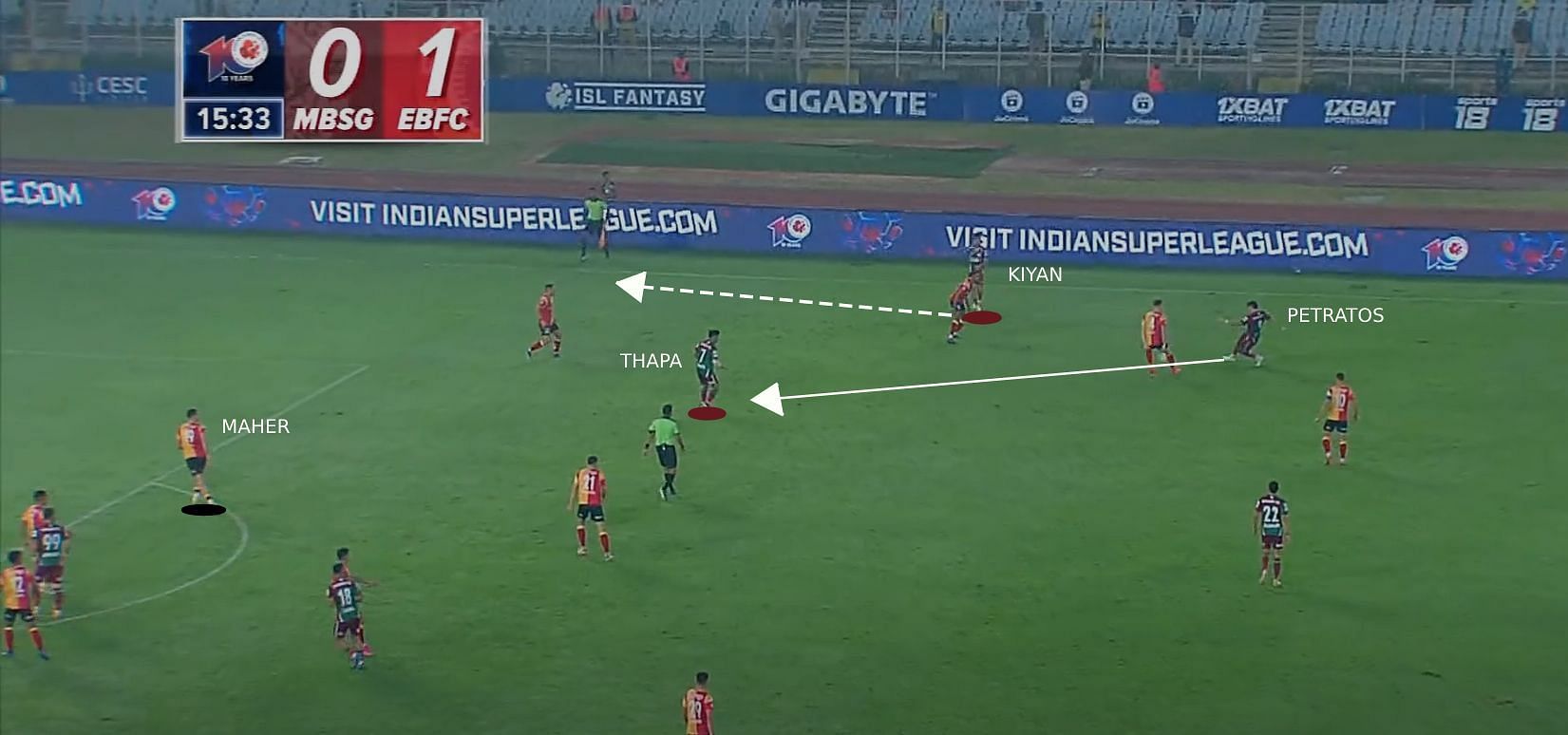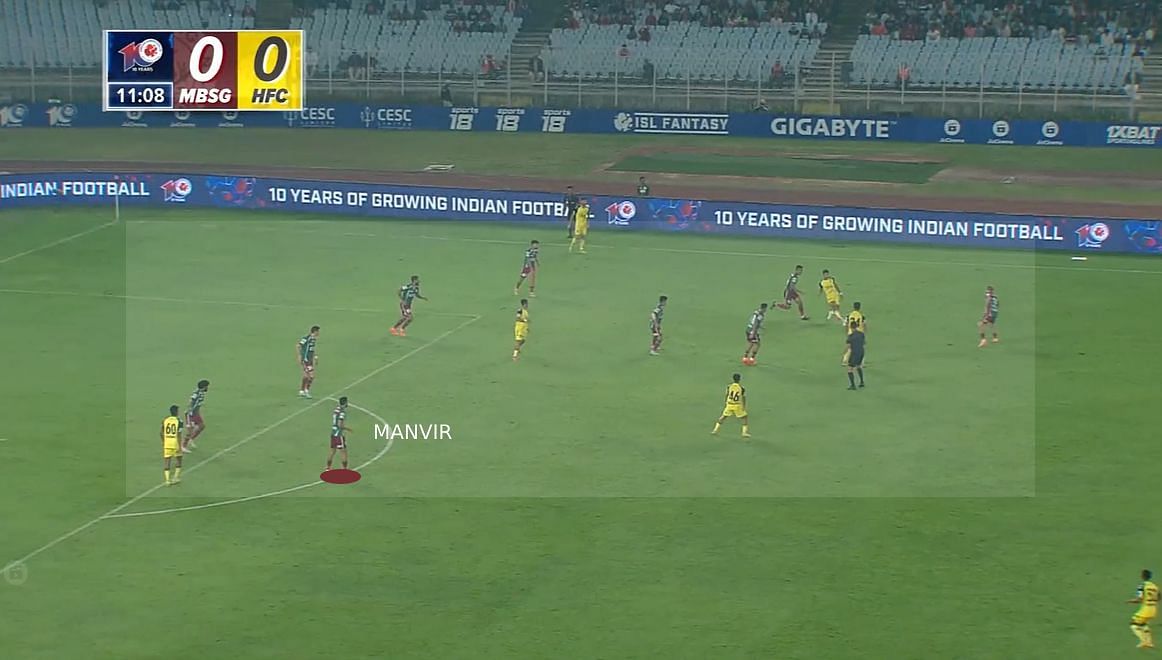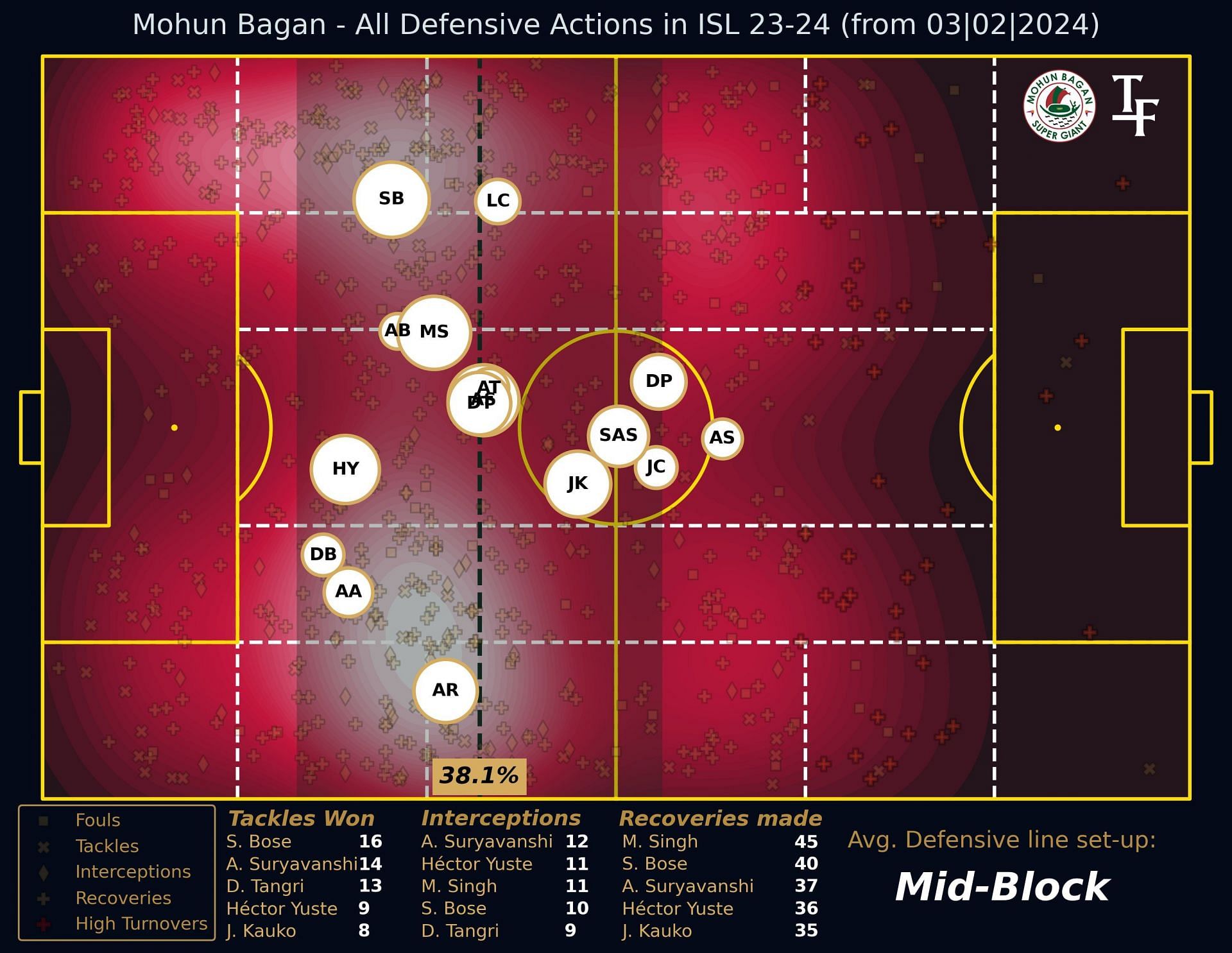
Analyzing Mohun Bagan SG's transformation under Antonio Habas | ISL 2023-24
Change unfolds quickly in the world of football, a reality Mohun Bagan Super Giant know all too well. The departure of their Indian Super League (ISL) winning coach, Juan Ferrando, just half a year post-triumph may have caught many off guard. Yet, it underscores how a series of unfavorable results coupled with a weary team atmosphere can result in a shift.
A promising start to the season with six wins in the opening seven games was followed by a downturn, marked by elimination from the AFC Cup and a couple of heavy defeats, notably against Odisha FC and FC Goa.
Despite Ferrando’s dismissal, the appointment of Antonio Habas, a seasoned figure familiar with the club’s ethos, certainly benefitted the club. As the two-time ISL champion assumed the role of head coach, previously serving as technical director, Mohun Bagan’s fortunes shifted positively. And now, they stand on the brink of further glory.
Mohun Bagan SG structure under Antonio Habas
Mohun Bagan’s greatest challenge before the start of the season was achieving the right balance with the number of star players they had signed. They began by bringing in Sahal Abdul Samad and Anirudh Thapa to strengthen their midfield, in addition to signing marquee forwards Armando Sadiku and Jason Cummings.
The question of how much is too much was always there, and it quickly became evident that it was indeed too much for Juan Ferrando, who struggled to effectively integrate all the star players, leading to poor results.
When Habas took over, the task was far from easy, prompting him to make a significant decision before the start of the Indian Super League’s second half. Hugo Boumous was omitted from the squad, with Joni Kauko, returning from a lengthy injury spell, taking his place. The rationale behind this decision was to achieve the desired balance in the team.
"Everything depends on the quality of the players you have. You have players for playing attacking football, you will play attacking football. The magic word is balance. You not only have to attack, but also defend at the same time in matches," Habas said.
In terms of structure, Habas picked a page out of Ferrando’s book, choosing to employ various attacking systems that complement the players at his disposal. Typically starting with a 3-1-4-2 formation, he has also shifted to a 3-4-2-1 setup and, on occasion, even utilized a 3-5-2 formation. Ultimately, in modern football, formations on paper hold little significance, and Habas has adapted his tactics based on the opposition.
The primary challenge was maximizing the potential of key players, a feat he has undoubtedly achieved, particularly with the forwards - Armando Sadiuku, Jason Cummings, and Dimitri Petratos. Additionally, Habas has provided opportunities for young talents such as Abhishek Suryavanshi, Dipendu Biswas, and Kiyan Nassiri, who have proven instrumental in executing his desired style of play.
It’s evident that Habas has evolved his approach and tactics from previous years. Under his guidance, Bagan have not only struck an attacking balance but have also displayed significant defensive improvements, fueling their late surge towards the title. With this in mind, let’s delve deeper into the makeup of a 2024 Habas-led team.
The tactics - In possession
Mohun Bagan have typically deployed a 3-1 setup in the first line, usually featuring Anwar Ali, Hector Yuste, and Subhasish Bose as the center-backs, while Suryavanshi or Deepak Tangri assume the role of a deep-lying midfielder. On occasion, they have used a double pivot in front of the center-backs to draw pressure and facilitate progression through the midfield.
Width is predominantly provided by the wing-backs, who, in terms of player profiles, are versatile wingers capable of fulfilling defensive duties. Manvir Singh, in particular, has excelled in this role on both flanks, recording six assists this season. Additionally, the likes of Liston Colaco, Kiyan Nassiri, Asish Rai, and Amandeep Singh have rotated on the wings.
In midfield, Habas has typically favored Sahal over Anirudh Thapa in most games. Joni Kauko’s return has offered a balanced midfield dynamic, with him serving as a box-to-box midfielder alongside Sahal, who operates as a pure number 10. Upfront, Dimitri Petratos has been a constant presence, with Cummings and Sadiku rotating consistently.
At the core of Mohun Bagan’s progression into the final third lies in their utilization of positional rotations and their ability to win ‘small-sided games’.
Starting with positional rotations, the Mariners typically execute this on the right side, where Petratos frequently operates. The combination of the wide center-back, central midfielder, and wing-back, with Petratos, consistently allows them to overload the midfield. This, in turn, draws additional defenders and generates space either behind the defensive line or out wide. A prime example of this approach can be observed in the sequence below against East Bengal.
Petratos escapes his marker and drops deeper, while Thapa moves forward to rotate with him, which drags his marker - Pardo (number 4). Thapa subsequently finds himself free to receive the ball on the turn, as East Bengal fail to commit a center-back to mark him, fearing it might expose space behind the defensive line.

Eventually, Thapa utilized Nassiri on the wing, facilitating Mohun Bagan’s progression into the final third with relative ease.

Positional rotations are fairly common in Mohun Bagan’s approach, but what differentiates them from others is their ability to create consistent numerical superiority. The ‘small sided games’ refer to this. The Mariners have shown their proficiency in one-on-one situations and find the right passes when they have an overload or when the opponents match them numerically.
The match against Hyderabad FC showed numerous instances of this, where Mohun Bagan effectively created four-versus-three situations on the flanks and exploited the space behind the opposition’s defence.
Petratos, switching sides here, draws the opposing full-back along with him, thereby opening up space behind for Manvir Singh to exploit. With Sahal occupying another player, Bose finds himself with ample time and space to deliver a precise pass.

The impeccable timing of these movements epitomizes Mohun Bagan’s brilliance. Mastering small-sided games such as these has emerged as the cornerstone of Mohun Bagan under Habas and is poised to remain pivotal, particularly in games where they dominate possession.
Mohun Bagan also showed fluidity in their approach to building up play from the back. Once again, the underlying concept behind the change in shape is to displace opponents from their positions and create space centrally. The following sequence against Jamshedpur FC is an example of how they employ third-man combinations to manipulate defenders’ movements and locate players in space.
Initially structured with a back three, Deepak Tangri adjusts by dropping deeper, effectively transitioning into a situational back four. This adjustment disrupts the defensive shape of opposition teams.

Tangri’s movement prompted Manzorro, tasked with marking Kauko, to be drawn towards him as he advanced closer to Anwar Ali. However, Manzorro, while looking to close down Tangri, uses his cover shadow to mark Kauko. But now, Suryavanshi cleverly steps out of Chima Chukwu’s shadow, presenting himself as an available passing option.
Subsequently, Mohun Bagan executed a third-man combination to locate Kauko, who found himself in abundant space to turn and run at the backline.

Mohun Bagan are also quite direct in possession, preferring to swiftly advance the ball into the final third compared to Mumbai City FC, FC Goa, and Odisha FC. Their aim is to create a numerical advantage in central areas resulting in frequent passes played between the lines. Furthermore, their wing-backs, typically positioned high and wide, serve as additional outlets in possession, which enables them to progress quickly.
The graph below illustrates this, with the X-axis representing the frequency of teams stringing together three or more passes, and the Y-axis indicating the average number of passes per sequence.

Moreover, Habas’ men have the highest percentage in the second part of the season in terms of pass sequences culminating in a shot on goal. This stat is unsurprising, considering they have averaged 15.75 shots per game under Habas, compared to just 13.5 shots per game under Juan Ferrando this season. Habas’ arrival has undeniably provided them with attacking freedom, aligning perfectly with the strengths of the players.
Out of possession
The advantage of using a back five is to usually attain a numerical advantage by having the wing-backs drop back and limit overloads. In the case of Mohun Bagan, however, their shape out of possession is also notably flexible. It can sometimes shift to a 4-5-1 formation, with the ball-sided wing-back advancing higher up the pitch to constrict space.
Manvir Singh once again emerges as a crucial component of Mohun Bagan’s ability to execute. His adeptness in reading the game and anticipating passes has proven pivotal in winning possession and initiating counter-attacks.
Like any elite team, Bagan are compact and narrow to restrict central spaces. But they can also seamlessly transition from a back five to a back four and vice versa, depending on the opponents.


For instance, if Manvir Singh pushes forward, both Anwar Ali and Biswas have the capability to shift across and defend the channels efficiently. They are also adept at handling one-to-one situations. Similarly, on the opposite flank, if the left wing-back ventures forward, Subhasish Bose, a natural left-back, has the ability to defend opposition wingers. This flexibility certainly provides Mohun Bagan with the freedom to utilize a dynamic defensive system.
Habas has also used this flexible approach depending on opponents. Against FC Goa and Odisha FC, he introduced a more defensive Asish Rai into the set-up as the wing-back, and predominantly used a 5-3-2 or occasionally a 5-4-1 formation to restrict their ability to exploit wide channels and break through the defensive line.
The outcome was remarkable; they conceded just 0.50 xG against both teams, marking the lowest number of expected goals conceded during Habas’ tenure. Furthermore, Odisha FC managed only 10 touches in the penalty box against Mohun Bagan, their lowest tally against any team this season.

While Mohun Bagan have conceded more shots per game under Habas compared to Ferrando, the crucial distinction lies in the locations where these shots are allowed. Under Ferrando, despite fewer shots, the team conceded several high-quality chances. However, Habas has ensured that while conceding shots, the territory and areas in which they concede are significantly less dangerous.
Nevertheless, employing a 5-3-2 system poses its own set of challenges. The risk of attempting to apply pressure is that the narrow shape makes it challenging to defend wide spaces. This has proven to be Mohun Bagan’s Achilles’ heel in the second half of the season.
In the below sequence, NorthEast United’s left-back, Samte, finds acres of space ahead due to Mohun Bagan’s back-five formation, and exploiting this merely requires one quick switch of play.

Once the switch is made, Kauko struggles to cover the space, consequently drawing Manvir Singh towards Samte and leaving space behind for Jithin MS to exploit. Ultimately, Mohun Bagan are overloaded on the flank and concede a penalty.

Many of these issues were also evident against FC Goa when left-back Jay Gupta had space to carry the ball and lure defenders towards him. This is certainly a vulnerability that big teams will seek to exploit in the upcoming matches.
However, there have been numerous positives since Antonio Habas arrived. He has shed the ‘defensive manager’ label and fully embraced the new structure, resulting in his team scoring 19 goals and keeping four clean sheets in eight games.
They undoubtedly possess the quality to win the league title, yet the ultimate decider could be the final-day clash against Mumbai City FC, where Habas’ experience and flexible system could prove pivotal.